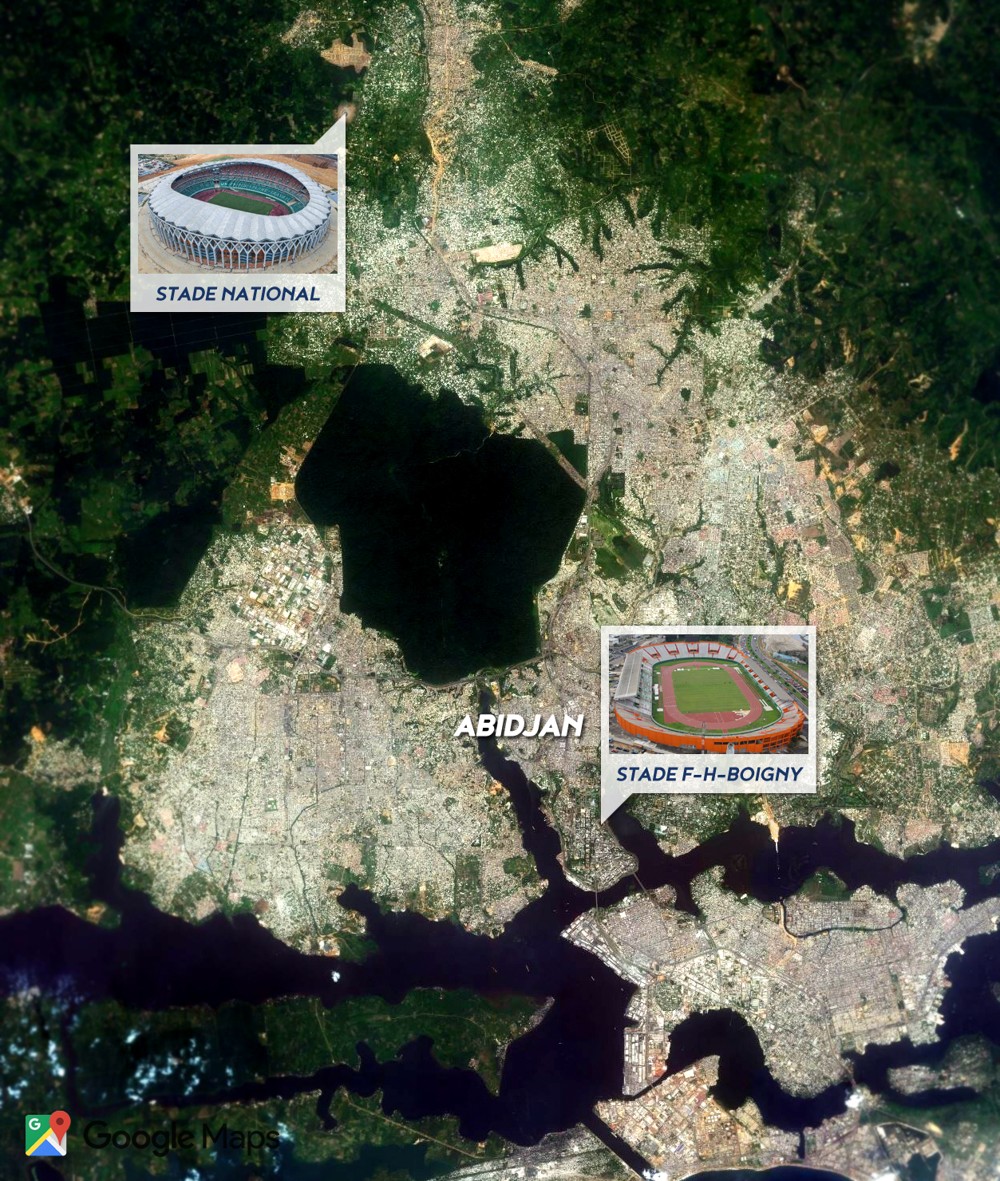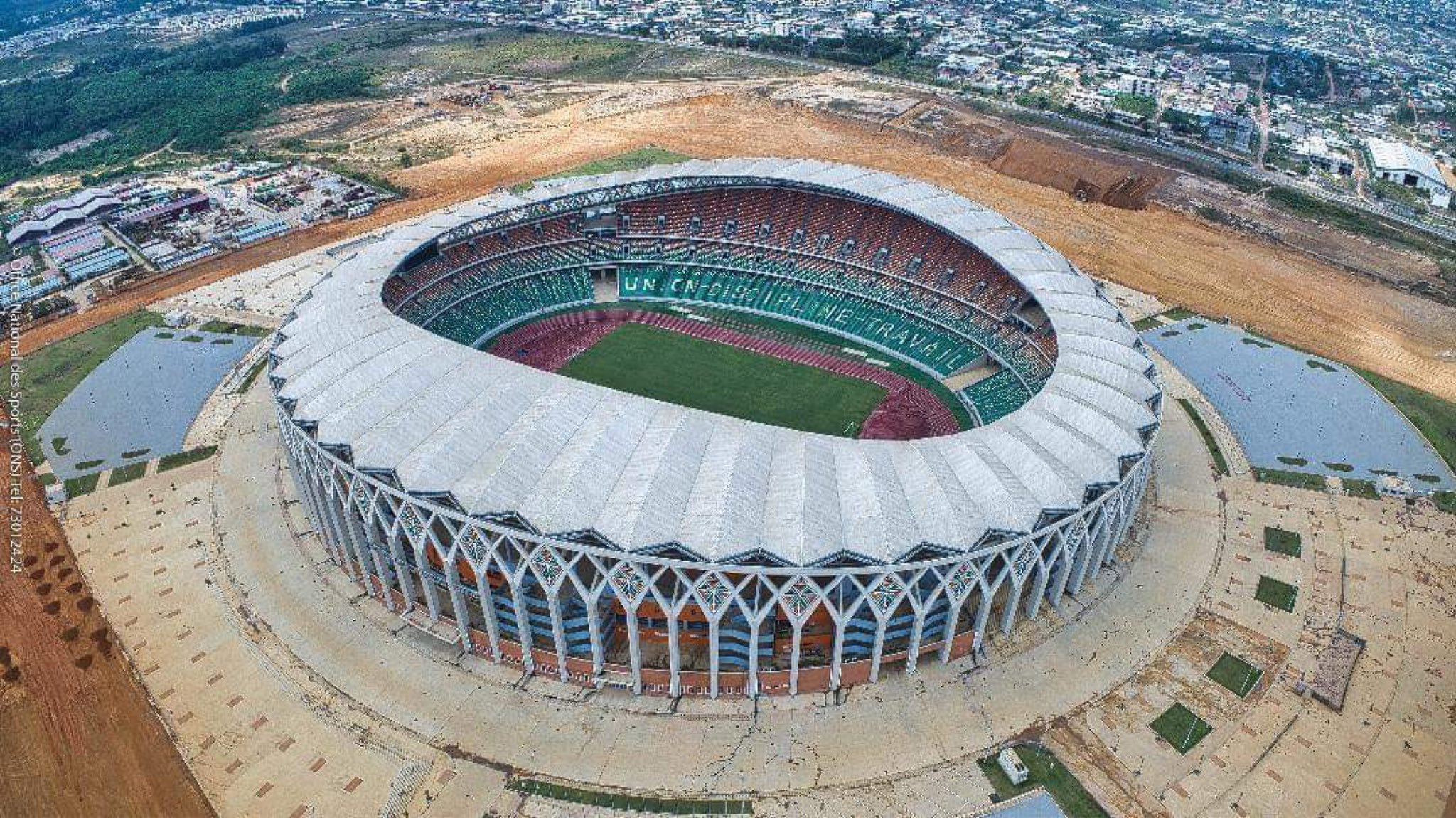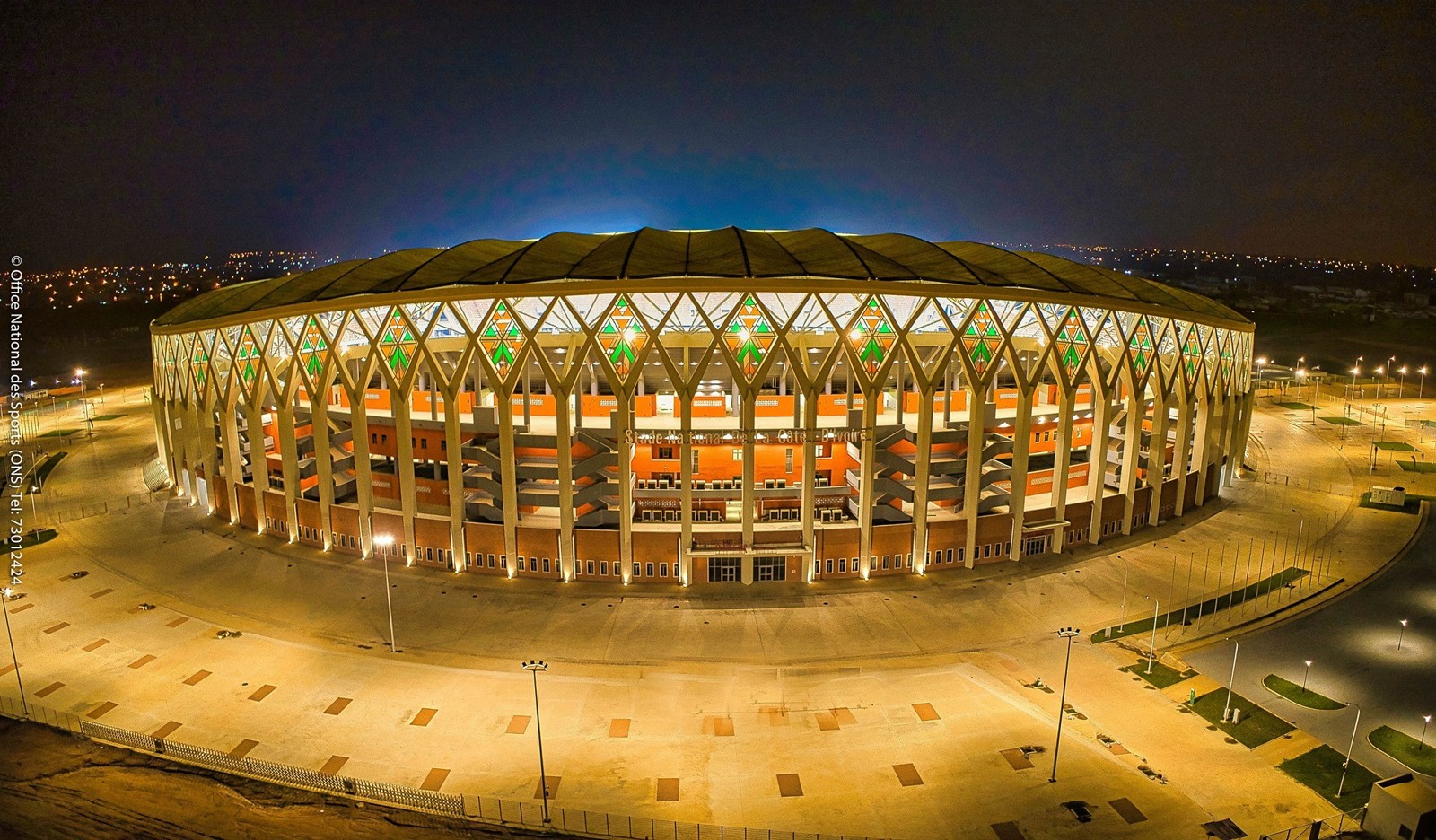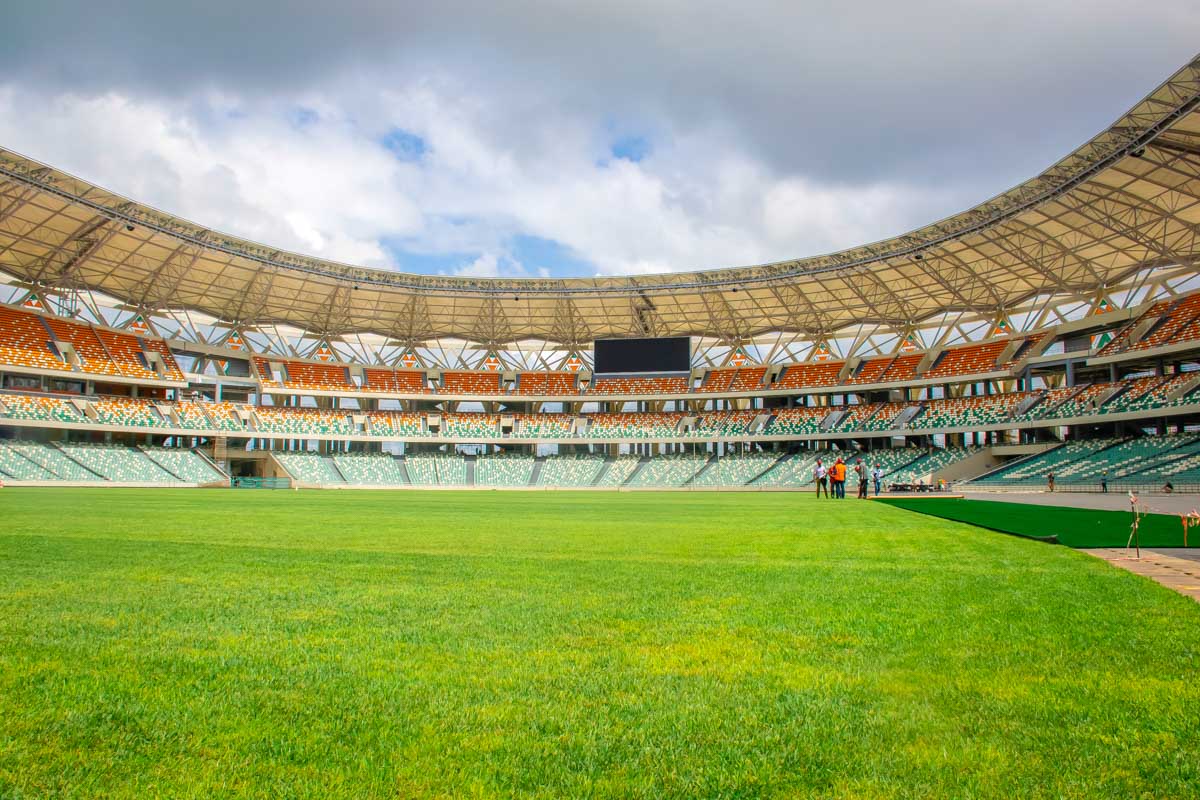New stadium: Ivory Coast's very own Arc de Triomphe
source: StadiumDB.com; author: michał
 There was no capacity cap or social distancing last week in Ivory Coast, when crowds flocked to the newly built national stadium. It's nearly twice the capacity of its predecessor and it was built, of course, by the Chinese.
There was no capacity cap or social distancing last week in Ivory Coast, when crowds flocked to the newly built national stadium. It's nearly twice the capacity of its predecessor and it was built, of course, by the Chinese.
Advertisement
Last Saturday the northern outskirts of Abidjan erupted with noise as some 50,000 people came to enjoy the opening game of the new national stadium. Aside from clash on the field between Asec Mimosas and Africa Sports, the event included impressive theatrical and dance display and a major fireworks show, visible from afar.
 This is the kind of event most of the western world isn't able to enjoy these days and it was attended by president Alassane Ouattara himself. He didn't let anyone miss him, too, with a limo round through the running track. Just two days after the event it was confirmed that the stadium will be named after Ouattara. It was in the works for many months, been rumoured about since 2019, but his name wasn't included in the official stadium name displayed across the facade.
This is the kind of event most of the western world isn't able to enjoy these days and it was attended by president Alassane Ouattara himself. He didn't let anyone miss him, too, with a limo round through the running track. Just two days after the event it was confirmed that the stadium will be named after Ouattara. It was in the works for many months, been rumoured about since 2019, but his name wasn't included in the official stadium name displayed across the facade.
The new national stadium of Ivory Coast was built quite remotely, away from Abidjan, between the communes of Ebimpé and Anyama. In a straight line the site lies some 20 km north of central Abidjan. Moving the sporting heart of the country outside the city proper was no accident. Eventually it's expected to become a part of a 287-hectare sports city, one of Africa's largest sports and leisure districts.
The stadium itself was delivered only with its direct perimeter, including four plazas and 1,400 parking places. The rectangular plot covers 20 hectares. Because of the difference in land height, the area required excavation reaching 500,000 tons of soil. This early stage proved particularly challenging with heavy rainfall causing mud flooding.
As is common with Chinese-African partnerships, nearly all of the work was carried out by Chinese companies. And quite some brands, too! The design documentation was prepared by Beijing Institute of Architectural Design (BIAD), while the construction process was carried out by Beijing Construction Engineering Group (BCEG).
Already at the level of early conceptual design the stadium received its nickname of “Arc de Triomphe” because the entirety is surrounded by 96 columns creating a dynamic arcade, adorned additionally with stained glass in national colours. It acts both as a facade and support for the roof. At peak the stadium reaches 51.4 meters in height, with app. 290 meters in length and 270 in width.
In total the building has a blueprint of over 61,250 m2 and offers 5 floors of facilities, particularly within the main stand. The seating bowl is divided into three tiers, which – respectively, from the bottom up – provide 24 rows, 13 rows and up to 28 rows in the uppermost tier. Only the third tier isn't a continuous ring, with openings in all corners. Although the auditorium is topped by 32 spacious roof girders, the roof only covers the third tier in its entirety, as well as part of the second one.
Construction officially began on December 22, 2016, with a delivery deadline set for October of 2019, after 34 months. At peak the site saw some 1,500 people working, of whom some 400 were Chinese. The deadline was eventually missed significantly, leading to the stadium being finished only in late spring of 2020. There was a number of reasons for the delay, including weather and numerous malaria cases among the Chinese staff, topped by COVID-19 late into the project. The latter issue is also what prompted the opening to be shifted to October of 2020.
Because the stadium was delivered in an international cooperation, the Ivorian government had to pay only part of the price tag, the remainder being funded by China. In total the stadium was reported to have cost XOF 143 billion (or $257 million, upon opening), of which 63 billion was covered by China.
With just over 60,000 seats, the stadium is nearly twice the size of the previous national stadium of Ivory Coast, Stade Félix-Houphouët-Boigny. After opening it became one of West Africa's largest stadia, set to become the final venue of the 2023 Africa Cup of Nations.
Advertisement

 StadiumDB
StadiumDB ©
©  ©
©  ©
©